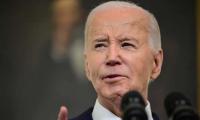Pakistan has finally nailed a broader agreement with the IMF on the fiscal framework for the next fiscal year. Inch away from getting a new lease on the $6 billion loan, the nascent government, which walked straight into the economic minefield laid by the PTI-led regime, is celebrating – thinking they have made it. But that last inch can become the longest. Though, there are no more differences between the two sides as far as the fiscal side is concerned, the monetary irritants are going to take a couple more parleys to be neutralized. The first dividend of the initial breakthrough, however, is the Chinese agreement to extend a $2.3 billion loan to Pakistan, which bespeaks the IMF has let most of its guard down, signaling to the world that Pakistan can now be trusted with foreign financial assistance. The IMF nod adds to a country’s global creditworthiness. In the days to come, the IMF staff will chalk out a Memorandum of Economic and Financial Policies (MEFP) and share it with Pakistani authorities. Under the agreement, the FBR’s tax collection target has gone up from Rs7,004 billion to Rs7,442 billion for the next budget, while the petroleum levy has come down from Rs750 billion to Rs550 billion. The government plans to hike the petroleum levy by Rs5 per litre, assuming the international oil market might remain in retreat in the days and weeks to come, creating space for the government to collect petroleum levy in the next fiscal year.
Before that, the IMF and the State Bank of Pakistan (SBP) will have to work out the exact number of the current account deficit (CAD) after placing the fiscal plan in the macroeconomic modelling of the framework prepared by the IMF for calculating the desired actions on account of both fiscal and monetary sides to strike a deal with the IMF. First the CAD numbers will be calculated and then the indicative target of Net International Reserves (NIR) will be set. Then both sides will work out the expected level of monetary tightening that will be finalized by the Monetary Policy Committee to move towards a staff level agreement for reviving the stalled $6 billion EFF programme. The IMF might ask the government to tighten its monetary policy to contain runaway inflation, which is going to slow down growth. If that happens, the revised tax collection target would become even harder to achieve. More prior actions would be hiking electricity and gas prices in the next fiscal year. This a recipe for even higher inflationary pressures in weeks and months ahead.
The best this option-less government can do to protect the poor and low middle income groups is to introduce targeted subsidies. Pakistan is deep in the belly of a beast of an economic crisis – the worst the country has ever seen in its independent years. The economic plague that is sweeping across every corner of the country has shattered the lives of millions. The worst of the economic evils is debt, internal and external, which has made Pakistan a ‘borrower with no other resort’. Every now and then we are knocking on the doors of global lenders to forestall a balance of payments crisis, without ever trying to strike at the root of the problem. And populist measures are the number one reason that allows the debt to gain weight at the expense of the economy. Pakistan direly needs to top up its foreign exchange reserves to service its foreign debt and maintain a sufficient import buffer. This is a debt loop we have never tried to come out of – and debt begets debt. The eternal debt loop can only be broken through structural economic reforms, depoliticization of the economy, and complete autonomy to economic and fiscal institutions. That also needs political will. Economic recovery is going to be a game of patience and austerity, a permanent feature of our lives in the short-to-medium terms, amid backbreaking inflation.
Country witnessed 432 violence-linked fatalities and 370 injuries among civilians, security personnel, and outlaws
During Raisi’s visit, Iran and Pakistan signed a total of eight accords on varying subjects to enhance cooperation...
Every year, millions of girls silently say goodbye to their education and the promise of a better career and get married
Ruling party emerged victorious in by-elections and as per unofficial results has won at least two out of five NA...
According to its organizers, the event now brings together around one billion people across 200 countries every April...
Pakistan’s nuclear programme, it would have threatened peace in the region because of its hegemonic designs







